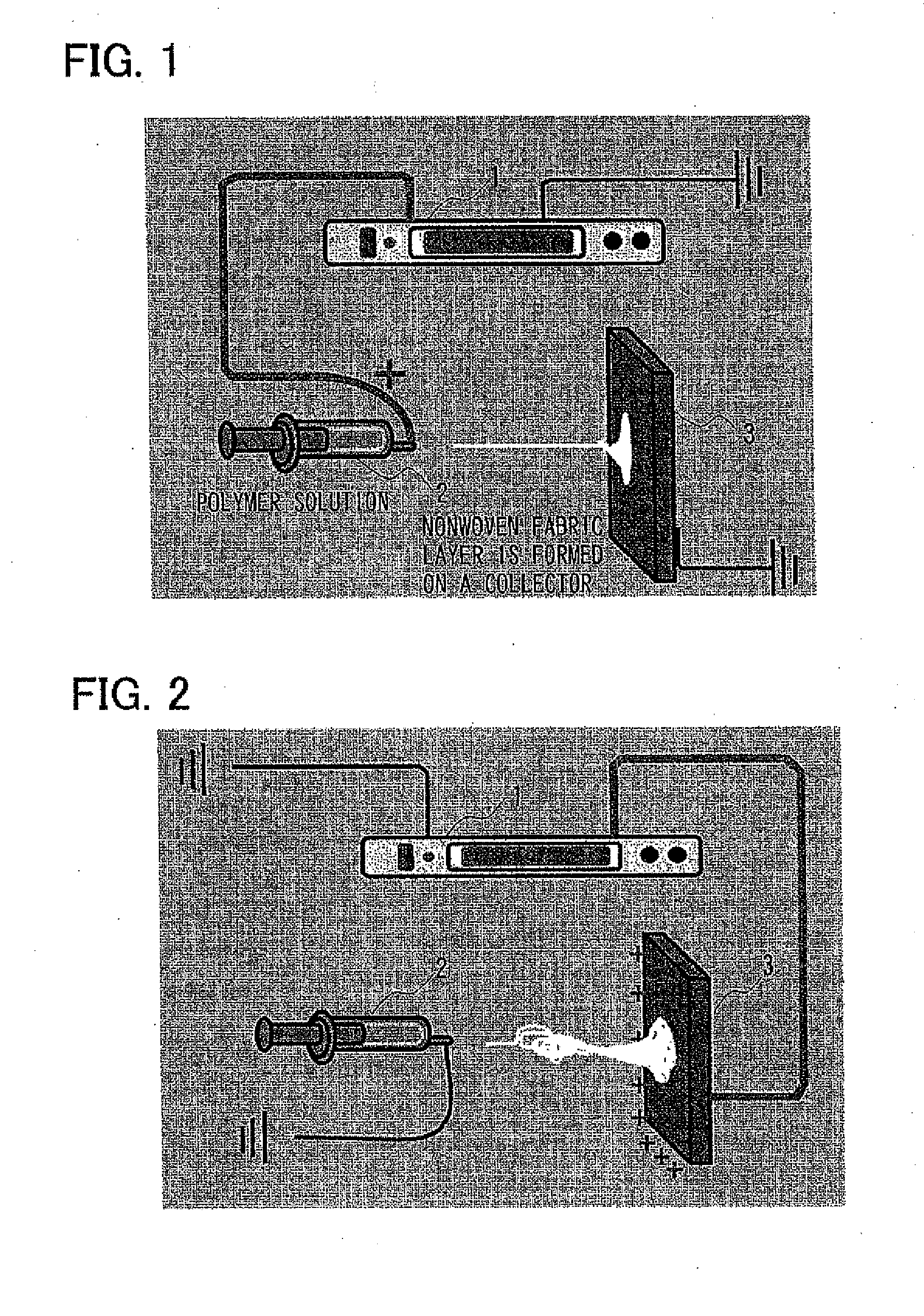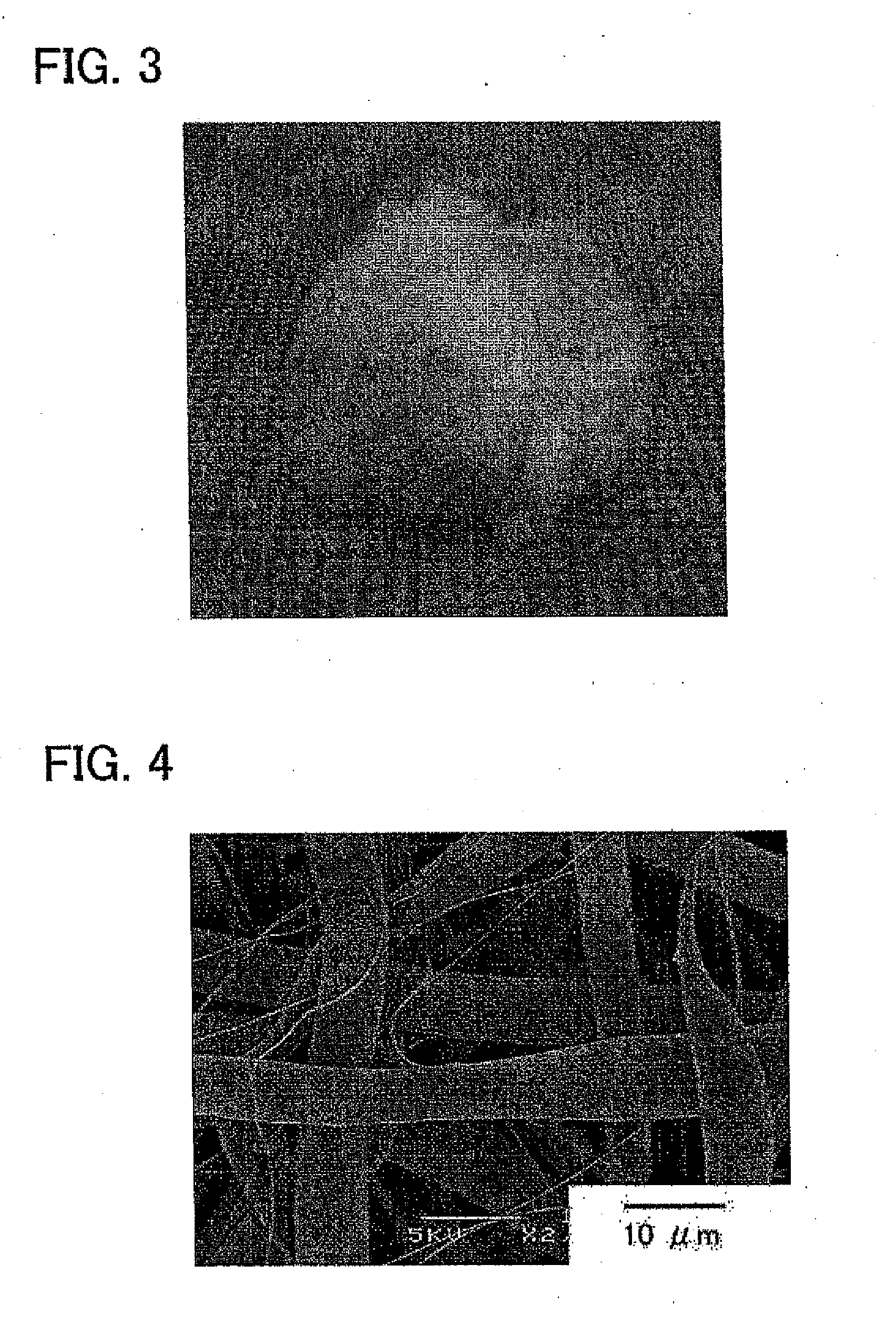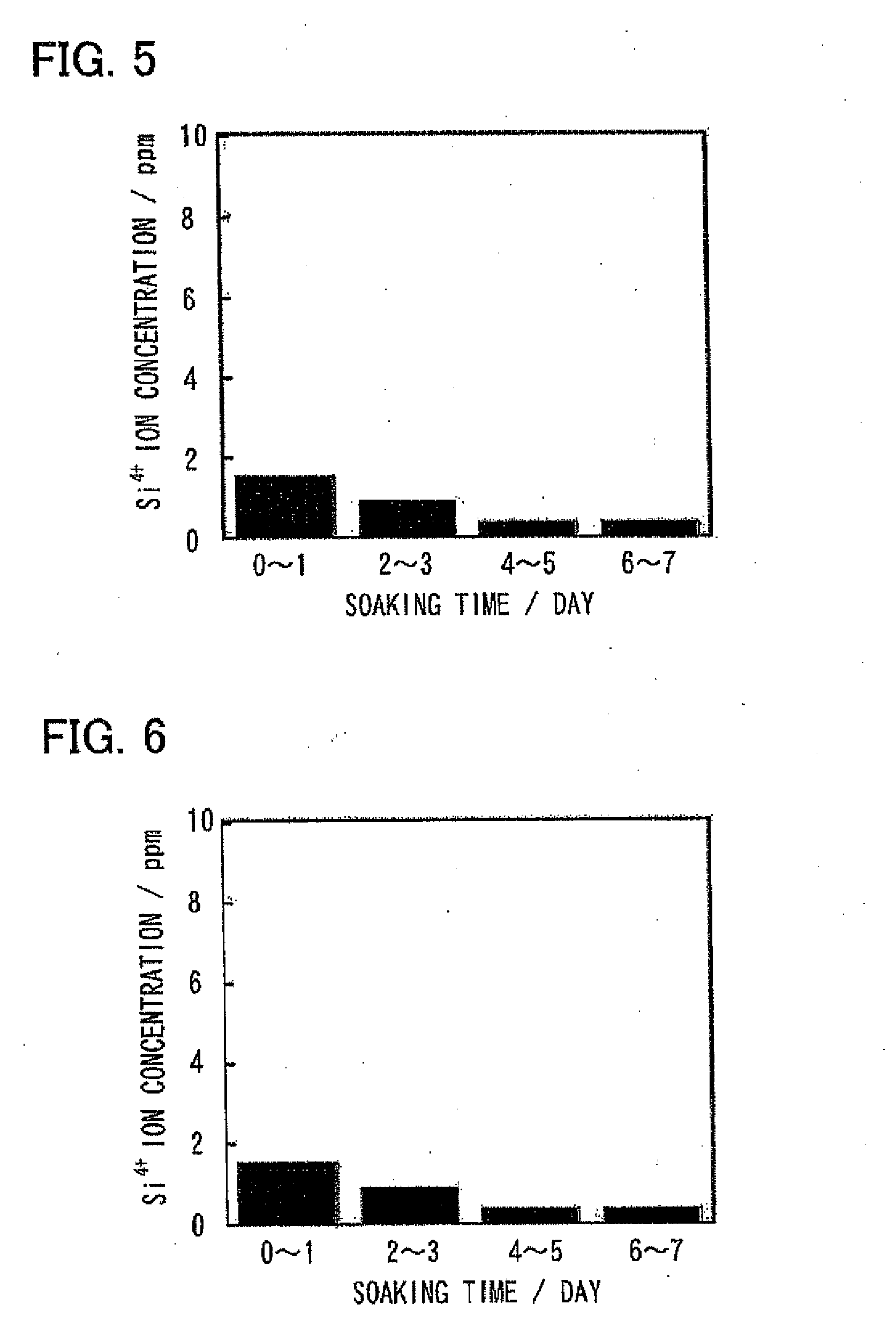Fiber wadding for filling bone defects
- Summary
- Abstract
- Description
- Claims
- Application Information
AI Technical Summary
Benefits of technology
Problems solved by technology
Method used
Image
Examples
example 1 and example 2
Raw Materials Used in Example 1 and Example 2
[0052]Poly(lactic acid) (PLA): PURASORB PL Poly(L-lactide), having a molecular weight of from 20×104 to 30×104, is from PURAC Biochem (a division of CSM; Netherlands). Chloroform (CHCl3): analytical grade reagent, with a purity of 99.0% or more, is from Kishida Chemical Co., Ltd., Japan. γ-Aminopropyltriethoxysilane (APTES): (TSL8331, with a purity of 98% or more, GE Toshiba Silicones Co., Ltd., Japan).
[0053]Siloxane-doped calcium carbonate (Si—CaCO3): Vaterite containing a siloxane in terms of a silicon ion content of 2.9 percent by weight and prepared by using slaked lime (Microstar T; with a purity of 96% or more; Yabashi Industries Co., Ltd., Japan), methanol (analytical grade reagent; with a purity of 99.8% or more; Kishida Chemical Co., Ltd., Japan), APTES, and carbon dioxide gas (high-purity liquefied carbon dioxide gas; with a purity of 99.9%; Taiyo Kagaku Kogyo K.K., Japan).
Electrospinning Conditions in Example 1 and Example 2
[0...
example 1
[0058]APTES (1 g) was added to ultrapure water (0.5 g) with stirring to give a solution. The solution was added dropwise to an 8% by weight PLA solution in CHCl3 so as to give an APTES content of 0.015 g and 0.050 g, respectively, followed by stirring. During this procedure, APTES was condensed to give a siloxane. To the resulting mixtures were added 1.5 g of ethanol and 1 g of ultrapure water to give spinning solutions. These spinning solutions were subjected to electrospinning and thereby yielded three-dimensional structures each including a fibrous substance containing a biodegradable resin as a principal component and containing or bearing a siloxane (hereinafter these steric structures are referred to as Si-PLA15 and Si-PLA50, respectively).
[0059]FIG. 3 depicts the appearance of the resulting three-dimensional structure (Si-PLA15). FIG. 4 shows a scanning electron micrograph (SEM) of this steric structure, demonstrating that the steric structure is a flocculent structure includ...
example 2
[0061]A Si—CaCO3 / PLA three-dimensional structure was prepared by kneading PLA and Si—CaCO3 in a heating kneader at 200° C. for 15 minutes to give a Si—CaCO3 / PLA composite containing 40 percent by weight of Si—CaCO3; mixing 1.67 g of the Si—CaCO3 / PLA composite with 8.33 g of CHCl3 to give a solution; adding 1.5 g of ethanol and 1 g of ultrapure water to the solution to give a spinning solution; and subjecting the spinning solution to electrospinning under the above-mentioned conditions.
[0062]The prepared three-dimensional structure has a flocculent appearance substantially the same as that shown in FIG. 3 and had superior flexibility and elasticity. FIG. 7 is a scanning electron micrograph (SEM) of the Si—CaCO3 / PLA three-dimensional structure, demonstrating that this steric structure is a structure including fine fibers having diameters of about 0.1 to about 3 μm and spherical calcium carbonate particles having diameters of about 1 μm embedded between the fibers. The fibers have smal...
PUM
| Property | Measurement | Unit |
|---|---|---|
| Length | aaaaa | aaaaa |
| Fraction | aaaaa | aaaaa |
| Fraction | aaaaa | aaaaa |
Abstract
Description
Claims
Application Information
 Login to View More
Login to View More - R&D
- Intellectual Property
- Life Sciences
- Materials
- Tech Scout
- Unparalleled Data Quality
- Higher Quality Content
- 60% Fewer Hallucinations
Browse by: Latest US Patents, China's latest patents, Technical Efficacy Thesaurus, Application Domain, Technology Topic, Popular Technical Reports.
© 2025 PatSnap. All rights reserved.Legal|Privacy policy|Modern Slavery Act Transparency Statement|Sitemap|About US| Contact US: help@patsnap.com



